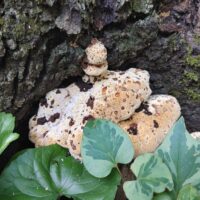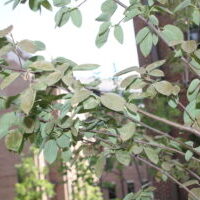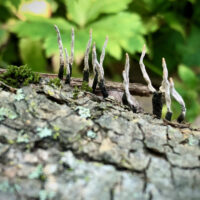 Purdue University - Extension - Forestry and Natural Resources
Purdue University - Extension - Forestry and Natural Resources
Got Nature? Blog
Illinois-Indiana Sea Grant Newsroom: The 2023 issue of Illinois-Indiana Sea Grant’s magazine, The Helm, is now available. This annual publication is a collection of program research, outreach and education success stories as well as ongoing activities to address coastal concerns. This issue is focused on stormwater management with green infrastructure, PFAS, and more, including how students are learning about water quality through hands-on opportunities.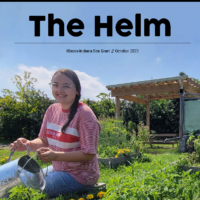
Here are some headlines from this issue:
- Green infrastructure helps communities—large and small—be ready for the future
- With a Hydrolab, Students study their own environment
- Study finds PFAS in all tested Lake Michigan sportfish and their prey
- Aquaponics offers high schoolers a hands-on way to learn science, math, and more
For full article and videos please visit New issue of IISG’s The Helm highlights green infrastructure projects – IISG
To download this new issue please visit IISG’s Publications and Products.
Resources
Aquaculture Industry in Indiana Growing, Purdue Today
Walleye Farmed Fish Fact Sheet: A Guide for Seafood Consumers, The Education Store, Purdue Extension resource center
Sustainable Aquaculture: What does it mean to you?, The Education Store
Pond and Wildlife Management website, Purdue Extension
Fish University Podcasts, NR University, Collaboration with Mississippi, Florida, Iowa and Indiana Extension Services
Fish Cleaning with Purdue Extension County Extension Director, Got Nature? Blog, Purdue Extension – Forestry and Natural Resources
Aquatics & Fisheries, Playlist, Purdue Extension – Forestry and Natural Resources
Eat Midwest Fish, Illinois-Indiana Sea Grant online resource hub
Ask An Expert: Hot and Cold, Video, Purdue Extension – Forestry and Natural Resources YouTube channel
Informing the Development of the Great Lakes Region Decision Support System, The Education Store, Purdue Extension’s resource center
Improving Water Quality Around Your Farm, The Education Store
Scientists bring the Great Lakes to students learning from home, Got Nature? Blog
Adaptations for Aquatic Amphibians Activity 2: Water Quality Sneak Peak, Purdue Nature of Teaching
Illinois-Indiana Sea Grant (IISG)
MyDNR, Indiana’s Outdoor Newsletter: When you purchase this limited edition shirt, you are helping reforest Indiana. For each shirt sold, the Natural Resources Foundation will partner with the Indiana Department of Natural Resources – Division of Forestry and plant one tree in an Indiana State Forest to celebrate Arbor Day and Earth Day.
Along with each shirt, you’ll receive an official tree certificate with a unique tree ID and the coordinates for the acre where the tree will be planted. If you are interested in participating in the next public tree planting, please e-mail Cheryl Hampton at champton@dnr.in.gov to receive updates.
The types of trees planted are native Indiana hardwoods and typically upland and bottomland oaks, walnut, black cherry and other species that are in need of restoration.
To buy a shirt and learn more please visit the store page.
For more information on the Indiana Tree Project please visit the Indiana Natural Resources Foundation.
Sign up to receive the MyDNR Newsletter by email: MyDNR Email Newsletter
Resources:
Investing in Indiana Woodlands, The Education Store
Forest Improvement Handbook, The Education Store
ID That Tree, Purdue Extension-Forestry & Natural Resources (FNR) YouTube playlist
Woodland Management Moment , Purdue Extension-FNR YouTube playlist
Find an Arborist, International Society of Arboriculture
Planting Your Tree Part 1: Choosing Your Tree, Purdue Extension YouTube Channel
Native Trees of the Midwest, The Education Store
Shrubs and Woody Vines of Indiana and the Midwest, The Education Store
Finding help from a professional forester, Indiana Forestry & Woodland Owners Association
District Foresters for 10 plus acres, Indiana Department of Natural Resources
Indiana Department of Natural Resources
Seafood is more than just fish caught in the ocean. It includes a wide variety of product types, forms, flavors, and textures. One of the great things about using seafood is its versatility—it can be served as a main course or be used as an ingredient for appetizers, salads, and soups. Packed with important nutrients the human body needs to maintain good health, it is an excellent source of protein to include on your shopping list. Being informed about both the benefits and potential concerns with different types of seafood can help you decide which products to add to your cart or order at a restaurant.
This toolkit, designed specifically for nutrition and wellness professionals and educators, will provide you with information and resources to help you talk to your clients about the complex food category known as seafood. You will learn about the basics of seafood, nutrition benefits of including seafood as part of a healthy eating pattern, concerns about safety, tips for purchasing seafood, and ideas for cooking demonstrations. We’ve included simple and tasty recipes that you can use to introduce your clients to the many flavors of fish and shellfish, links to downloadable and printable handouts, and sample social media posts that you can use to inform and inspire.
This toolkit is geared toward extension staff who teach nutrition and wellness. It includes both printable and digital elements that can be shared with clients based on interest and need.
To receive the free download and recipe visit the Purdue Extension’s resource center: The Education Store – Seafood Basics: A Toolkit for Understanding Seafood, Nutrition, Safety and Preparation, and Sourcing.
Resources:
Purdue Extension – Forestry and Natural Resources– Subscribe to the Youtube channel
Freshwater Prawn Farmed Fish Fact Sheet, The Education Store
Ask An Expert: What is Aquaculture?, Purdue Extension FNR YouTube Channel
Largemouth Bass Market Trends, Purdue Extension – Forestry and Natural Resources (FNR) YouTube Channel
Yellow Perch Farmed Fish Fact Sheet, The Education Store
Tilapia Farmed Fish Fact Sheet, The Education Store
Rainbow Trout Farmed Fish Fact Sheet, The Education Store
American Paddlefish, The Education Store
A Guide to Small-Scale Fish Processing Using Local Kitchen Facilities, The Education Store
Aquaculture Family Coloring Book Development, The Education Store
Channel Catfish, The Education Store
Eat Midwest Fish, Illinois-Indiana Sea Grant online resource hub
Amy Shambach, Aquaculture Marketing Outreach Associate
Purdue Department of Forestry and Natural Resources/Illinois Indiana Sea Grant Program
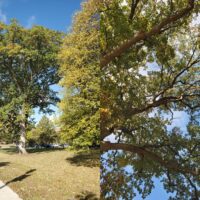
Figure 1: Mature oak tree known to be infected by Inonotus dryadeus on Purdue University West Lafayette campus. Right image shows limb death suggestive of tree decline.
Purdue Landscape Report: Inonotus dryadeus is one of the more common wood decay fungi we receive at the diagnostic lab in association with declining trees, specifically oaks. Inonotus is found so frequently on oaks it has the common name oak bracket fungus, but it can cause root rot of a number of other hardwood trees (including maples, sweet gum, buckeyes, chestnut, and ash) and conifers (fir, pines, spruce, and hemlock – mostly in western US).
Similar to other butt and root rots of trees, Inonotus causes internal decay near the base of the tree. Trees may not show any external symptoms while there is a raging root rot decaying everything holding it up, eventually leading to an unexpected failure of the tree during a windstorm. Trees with compromised root systems may also die suddenly during hot and dry weather. Most often, we see a gradual decline of infected trees with stunted growth, limb dieback, and/or sparse, off-color foliage; symptoms that may accelerate during adverse environmental conditions (Figure 1).
The only good thing about this fungus is that it is somewhat easy to identify. Inonotus produces a round to irregularly-shaped conk like structure each year from colonized host tissue, such as exposed roots, the trunk at the soil-line, or lower trunk (Figure 2). When it is young the conk is yellow to orange on the upper surface and white on the underside. Pores in the upper surface of the conk producing amber colored liquid can also be found earlier in the spring and early summer, lending to its other common name the weeping conk (Figure 3).
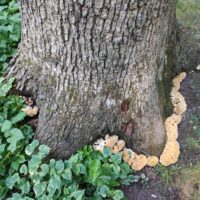
Figure 2: Extensive growth of Inonotus dryadeus from the base of an oak tree. The tree had significant limb dieback, was at risk of falling over, and subsequently removed.
To view this full article and other Purdue Landscape Report articles, please visit Purdue Landscape Report.
Subscribe and receive the newsletter: Purdue Landscape Report Newsletter.
Resources:
Root Rot in Landscape Plants, The Education Store, Purdue Extension resource center
Dead Man’s Fingers, Purdue Landscape Report
ID That Tree Fall Color: Sugar Maple, Purdue Extension – Forestry and Natural Resources (FNR) YouTube Channel
ID That Tree Fall Color Edition: Black Gum, Purdue Extension – FNR YouTube Channel
An Introduction to Trees of Indiana, The Education Store
Autumn Highlights Tour – South Campus, Purdue Arboretum Explorer
Subscribe, Purdue Extension – FNR YouTube Channel
Tree Defect Identification, The Education Store
Tree Wound and Healing, Got Nature? Blog, Purdue Extension – FNR
Shrubs and Woody Vines of Indiana and the Midwest, The Education Store
Ask an Expert: Tree Selection and Planting, Purdue Extension – FNR YouTube playlist
ID That Tree, Purdue Extension – FNR YouTube playlist
Invasive Species, Playlist, Purdue Extension – FNR YouTube Channel
Report Invasive Species, Purdue Invasive Species
Find an Arborist, International Society of Arboriculture
John Bonkowski, Plant Disease Diagnostician
Departments of Botany & Plant Pathology
Forests provide multiple ecologic, economic and societal benefits, but they may not be realizing their potential due to poor or no management activity as well as threats like invasive plants species and pests.
Are you a landowner looking to learn about the biology and management of forests? Do you want to learn about the resources and professional assistance you can access to help form your property management goals and pursue your objectives for your land? Sign up for the Purdue Extension Forest Management for the Private Woodland Owner course, either virtually or through an in-person course.
This eight-week virtual course provides access to an eight-part video series that participants can view on their own schedule as well as three online, live question and answer sessions with Purdue Extension Forester Lenny Farlee. Live online meetings are scheduled for:
- Thursday, Feb. 22, 2024 – 6:30 – 8:30 p.m. ET
- Thursday, March 14, 2024 – 6:30 – 8:30 p.m. ET
- Thursday, April 11, 2024 – 6:30 – 8:30 p.m. ET
Topics covered in the videos include tree identification, forest history and biology, forest management planning, forest management practices, considerations for selling timber, forest investment and taxation, wildlife habitat management, and resources and assistance for private woodland owners.
Links to additional resources and information on field tours and other educational opportunities will be provided throughout the course.
The fee for this virtual course is $15. Registration is available online now through Feb. 13, 2024.
Please be sure that you have adequate internet access to view videos and participate in Zoom meetings, which are necessary to fully participate in the course content.
Any questions regarding the virtual course can be addressed to Lenny Farlee via email at lfarlee@purdue.edu.
In-person Forest Management for the Private Woodland Owner Course
Farlee also will teach an in-person version of the Forest Management for Private Woodland Owners course from March 6 to April 24, 2024 at Asherwood Preserve (7496 W SR 124) near Wabash, Indiana. The course will take place from 6-9 p.m. ET every Wednesday and will also include two Saturday field tours.
View event post with agenda: In-person Forest Management for the Private Woodland Owner Course.
Registration for the in-person course is open through Feb. 27, 2024 or until the course limit of 48 attendees is reached. Registration and course information are available online.
Registration cost is $50, which includes all learning sessions, a flash drive containing all information supporting the sessions, handouts and a tree measuring stick. Guest registration (in addition to initial registration) is $30 and includes all learning sessions and handouts at the sessions.
Check out all upcoming FNR Extension events by visiting the Purdue Extension – Forestry and Natural Resources Event List.
Resources:
Forest Management for the Private Woodland Owner Course Program Impacts, Purdue Extension-Forestry and Natural Resources (FNR)
Forest Management for the Private Woodland Owner Course – Wabash County, Purdue Extension-FNR Events
Forestry Management for the Private Woodland Owner Course – SIPAC, Purdue Extension-FNR Events
Virtual Forest Management for the Private Woodland Owner Course, Purdue Extension-FNR Events
Forestry Management for the Private Woodland Owner Course – Jackson County, Purdue Extension-FNR Events
Cost Assistance for Landowners Planning Conservation Practices, Purdue Extension-FNR Got Nature? Blog
Woodland Stewardship for Landowners: EQUP, video, Purdue Extension-Forestry and Natural Resources (FNR) YouTube Channel
Woodland Stewardship for Landowners YouTube Playlist, Purdue Extension – FNR
Woodland Management Moment: Invasive Species Control Process, Purdue Extension – FNR Video
Woodland Management Moment YouTube Playlist, Purdue Extension – FNR
Invasive Species YouTube Playlist, Purdue Extension – FNR
What are invasive species and why should I care?, Got Nature? Blog, Purdue Extension – Forestry and Natural Resources
Report Invasive Species, Purdue Invasive Species
The GLEDN Phone App – Great Lakes Early Detection Network
EDDMaps – Early Detection and Distribution Mapping System
Hardwood Ecosystem Experiment: Uneven-aged Management, Purdue Extension – FNR Video
Finding help from a professional forester, Indiana Forestry & Woodland Owners Association
Forest Improvement Handbook, The Education Store, Purdue Extension resource center
Lenny Farlee, Extension Forester
Hardwood Tree Improvement & Regeneration Center (HTIRC)
Purdue University Department of Forestry and Natural Resources
Purdue Landscape Report: Temperatures are finally dropping and leaves are changing color. Autumn is progressing well in my opinion. Before you know it winter will be here, and some people will be wondering is there anything to be done to better protect the trees around you? The answer is yes, and I applaud you for your initiative to continue caring for your trees. To give your trees the best chance to survive the winter and better thrive next year there is an assortment of activities available ranging from diy projects up to calling in an ISA certified arborist to help you out.
Mulching:
One simple task to better prepare your trees for winter is to add a new layer of mulch, which benefits your trees in multiple ways. Adding a 2-3 inch thick layer of mulch will better maintain moisture levels and buffer extreme temperature changes in the soil and will add some organic matter too. Mulching to the drip line will benefit the tree the most, but in the case of larger trees it’s not always feasible. Try for at least a 3-foot radius from the trunk and make sure to leave a 2 inch or so gap between the trunk and the mulch. Remember, no volcano mulching.
Fertilizing:
That mulch you just added will add some organic material to your soil as it slowly breaks down, but an autumn fertilization can benefit your trees too. Unlike trees in the forest that have a natural supply of nutrients from fallen leaves and twigs, trees around our homes are usually deprived as we rake and clean up our yards. Adding a slow-release fertilizer in the fall helps provide a nutrient boost over the winter, can promote root growth, and better prepare your tree for Spring.
Watering:
Water is still an essential part of your tree care plan, but as temperatures drop and trees begin to head into dormancy they don’t need as much water as is required in the hit summer months. If you have irrigation systems in your yard start to drop the frequency of watering. You can water up until the first freeze, but make sure soils are just a little damp and not soaked. Evergreens in particular will benefit from slow deep watering 1-2 times a week until the soil freezes. Winter winds and temperatures can desiccate the needles without an adequate supply of water.
Pruning:
Now is a good time to prune out any dead, damaged, or diseased limbs in your trees. If you have access to hand saws and pole saws or pruners, you can remove smaller branches or those closer to the ground. Make sure you are making proper pruning cuts though, and if there are large limbs, those at heights, or you are just unsure of how to make a good cut enlist the help of a professional arborist.
Trunk damage:
Sunscald or southwest damage occurs on young and/or thin barked trees in the winter. Wounds can occur between the south to southwest facing part of the trunk on sunny days in the winter as temperatures rise and suddenly drop. Over time these wounds can become quite large. Trees can also incur damage from deer during the rut. Bucks will scrape trees with their antlers, scraping off the bark and damaging the cambium. Both of these injuries can be reduced one younger trees by installing tree guards in the fall. Tree guards are plastic barriers you place around the main stem of the tree. I recommend using white corrugated drainage pipe that can be found at most home centers. You can make a cut lengthwise along the pipe for easy installation and make sure it has a large enough diameter to leave a space between it and the tree. Just remember to remove it come Spring.
Inspections:
Visual inspections can be done year-round, but this time of the year it might be easier to see changes in your tree as leaves are falling and the canopy becomes more visible. From the ground up to the canopy, some of the things you’re looking for include fungal growth around the base of the tree, any sort of damage on the main stem or branches, premature leaf drop or color change, and branches that are dead, cracked, diseased, or seem weak. Any concerns you find are also great information to share with an ISA Certified arborist which can be found using the Trees Are Good website.
To view this full article and other Purdue Landscape Report articles, please visit Purdue Landscape Report.
Subscribe and receive the newsletter: Purdue Landscape Report Newsletter.
Resources:
Re-mulch Your Trees, Purdue Landscape Report
Pruning, Purdue Landscape Report
Southwest Damage/Sunscald, Purdue Landscape Report
Planning the Tree Planting Operation, The Education Store, Purdue Extension’s resource center
Tree Risk Management, The Education Store
Tree Planting Part 2: Planting Your Tree, The Education Store
Planting Your Tree Part 1: Choosing Your Tree, Purdue Extension – Forestry and Natural Resources (FNR) YouTube Channel
Summer Tree Care, Purdue Landscape Report
Tree Defect Identification, The Education Store
Tree Wound and Healing, Got Nature? Blog, Purdue Extension – FNR
Surface Root Syndrome, The Education Store
Shrubs and Woody Vines of Indiana and the Midwest, The Education Store
Ask an Expert: Tree Selection and Planting, Purdue Extension-FNR YouTube playlist
ID That Tree, Purdue Extension-FNR YouTube playlist
Subscribe – Purdue Extension-FNR YouTube Channel
Ben McCallister, Urban Forestry Specialist
Purdue Forestry & Natural Resources
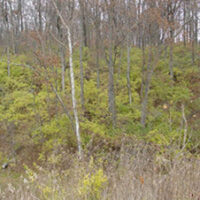
In early November, invasive bush honeysuckle is one of the only understory shrubs that are still green.
In early November, invasive bush honeysuckle is one of the only understory shrubs that are still green. While many of our native plants are dormant, Asian bush honeysuckle remains green longer. This makes them easy to locate since they are one of the few green shrubs in the woods. Doing control measures this time of year also reduces impacts to non-target plants.
How do you control it? That depends on what resources you have available. Small plants can be easily pulled by hand; be sure to hang them on tree branch rather than laying them down on the ground so they don’t re-root. In most cases, some method of herbicide control will be necessary. Ohio State University has a good guide on various methods of control, Controlling Non-Native Invasive Plants in Ohio Forests: Bush Honeysuckle.
Not sure where to start on your property? One of the most daunting aspects of invasive plant control is where to begin. Ellen Jacquart, former Director of Stewardship for the Nature Conservancy in Indiana, wrote an article in the Indiana Woodland Steward. The Where do I Start?! Prioritizing Invasive Plant Control article describes how to plan your invasive plant control including prioritizing what to do first.
Resources:
Subscribe to the Indiana Woodland Steward Newsletter
Consider Fall Eradication of Asian Bush Honeysuckle, Purdue Landscape Report
Asian Bush Honeysuckle, Purdue Extension YouTube Video
A Woodland Moment: Asian Bush Honeysuckle, Purdue Extension – Forestry and Natural Resources (FNR) YouTube Video
Invasive Plants of the Eastern U.S.: An Introduction to the Problematic Non-Native Species, The Education Store, Purdue Extension’s resource center
Report Invasive Species, Purdue Invasive Species
Report Invasive Species: Asian Bush Honeysuckle,
The GLEDN Phone App – Great Lakes Early Detection Network
EDDMaps – Early Detection and Distribution Mapping System
Episode 11 – Exploring the challenges of Invasive Species, Habitat University-Natural Resource University
What Are Invasive Species and Why Should I Care?, Purdue Extension-FNR Got Nature? Blog
Emerald Ash Borer Information Network, Purdue University and Partners
Aquatic Invasive Species, Illinois-Indiana Sea Grant (IISG)
Invasive plants: impact on environment and people, The Education Store, Purdue Extension’s resource center
Subscribe Purdue Extension-Forestry and Natural Resources YouTube Channel
Brian MacGowan, Wildlife Extension Specialist
Department of Forestry and Natural Resources, Purdue University
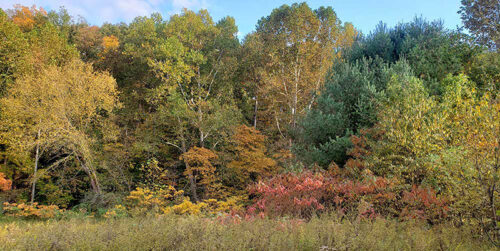 The Indiana Natural Resources Conservation Service (NRCS) is offering an opportunity for landowners to apply for cost assistance with conservation practices like tree planting, forest stand improvement, invasive species control, wildlife habitat improvement and many others.
The Indiana Natural Resources Conservation Service (NRCS) is offering an opportunity for landowners to apply for cost assistance with conservation practices like tree planting, forest stand improvement, invasive species control, wildlife habitat improvement and many others.
U.S. Department of Agriculture, Natural Resources Conservation Service News Release, Indianapolis, IN, October 11, 2023 – Farm Bill program application dates have been set for Indiana’s agricultural producers who want to improve natural resources and address concerns on their land. Curtis Knueven, USDA-Natural Resources Conservation Service (NRCS) Acting State Conservationist, announced that December 8 will be the application deadline for the Environmental Quality Incentives Program (EQIP) and Conservation Stewardship Program (CSP) in Indiana. This year’s funding levels are a historic high for Indiana NRCS, bringing $42 million in EQIP and $22 million in CSP for Indiana landowners.
EQIP is a voluntary conservation program available for agricultural producers. Through EQIP, NRCS provides financial and technical assistance to install conservation practices that reduce soil erosion and sedimentation, improve soil health, improve water and air quality and create wildlife habitat. Also included in this sign up are several state and national initiatives. A full list of initiatives can be found by visiting www.nrcs.usda.gov/programs-initiatives/eqip-environmental-quality-incentives/indiana/environmental-quality-incentives.
“EQIP helps agricultural producers in a manner that promotes agricultural production and environmental quality as compatible goals,” said Knueven. “Farmers can receive assistance to implement structural and management conservation practices that optimize environmental benefits on their working agricultural land while helping to increase their yields.”
CSP is an important Farm Bill conservation program that helps producers who are already practicing good stewardship to take their natural resource management to the next level. The program helps to improve both their agricultural production and provide valuable conservation benefits such as cleaner and more abundant water, as well as healthier soils and better wildlife habitat.
“Whether you are looking to improve grazing conditions, increase crop resiliency, or develop wildlife habitat, we can custom design a CSP plan to help you meet those goals,” Knueven said. “We can help you identify natural resource problems in your operation and provide technical and financial assistance to solve those problems or attain higher stewardship levels in an environmentally beneficial and cost-effective manner.”
While applications are accepted year-round, interested producers should work with their local NRCS staff and apply by December 8 to be considered for the current funding period. Applications received after December 8 will automatically be considered during the next funding cycle.
For more information about Farm Bill programs and other technical and financial assistance available through Indiana NRCS conservation programs, visit www.nrcs.usda.gov/indiana or contact your district conservationist www.farmers.gov/working-with-us/service-center-locator.
Resources:
Woodland Stewadrship for Landowners: EQUP, video, Purdue Extension-Forestry and Natural Resources (FNR) YouTube Channel
Woodland Stewardship for Landowners: Single Tree and Patch-Cut Harvesting, Purdue Extension – FNR Video
Woodland Stewardship for Landowners YouTube Playlist, Purdue Extension – FNR
Woodland Management Moment: Invasive Species Control Process, Purdue Extension – FNR Video
Woodland Management Moment YouTube Playlist, Purdue Extension – FNR
Invasive Species YouTube Playlist, Purdue Extension – FNR
What are invasive species and why should I care?, Got Nature? Blog, Purdue Extension – Forestry and Natural Resources
Report Invasive Species, Purdue Invasive Species
The GLEDN Phone App – Great Lakes Early Detection Network
EDDMaps – Early Detection and Distribution Mapping System
Hardwood Ecosystem Experiment: Uneven-aged Management, Purdue Extension – FNR Video
Hardwood Ecosystem Experiment: Even-aged Management, Purdue Extension – FNR Video
Finding help from a professional forester, Indiana Forestry & Woodland Owners Association
Forest Improvement Handbook, The Education Store, Purdue Extension resource center
Natural Resources Conservation Service
U.S. Department of Agriculture
Lenny Farlee, Extension Forester
Hardwood Tree Improvement & Regeneration Center (HTIRC)
Purdue University Department of Forestry and Natural Resources
Purdue Landscape Report: Mites are eight-legged arthropods who pierce plant cells to feed on them. Plants that are attacked by mites lose their green color and appear somewhat bronzed. Spider mites will make webs to help them forage on leaves unencumbered by irregular leaf surfaces. The accumulation of webs, and old skins of mites can give heavily infested plants a dusty appearance. This can make plants unsightly and affect their health.
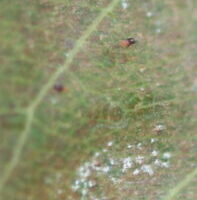
Figure 2. This serviceberry leaf has live European red mites, eggs and old shed skins that accumulate on the leaf.
Lack of rain this summer and fall has spared spider mites from drowning and being washed off leaves during heavy rains. Warm weather in late August and September allowed warm season mites, like two spotted spider mite, European red mite on flowering fruit trees, honeylocust, maple and oak spider mites to flourish. With the daily highs consistently below 85 F, cool season mites like spruce spider mite, boxwood spider mite and southern read mite have been increasing in number.
Now would be a good time to take stock of which plants have spider mites to help you plan your control strategy.
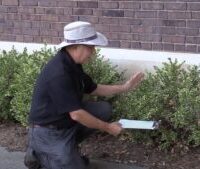
Figure 3. Tap the branches over a white sheet of paper. After giving the mites 10 seconds to grab hold of the paper, turn the sheet sideways to let the debris fall off. Then examine the specs to determine if they are spider mites. A 10X hand lens or smartphone can help you see these small pests.
Cool season mites, including southern red mite, boxwood spider mite and spruce spider mite may require treatment this fall to keep their populations from building. This could be accomplished with a garden hose and a strong stream of water or a 2% solution of horticultural oil or insecticidal soap.
At this point in the season, there is usually no need to spray trees for warm season spider mites. Because most spider mites will winter on trees and shrubs, these mite infested trees can be targeted for a spray of oil during the dormant season. It is important to note that plants with two spotted spider mites will not benefit from an oil spray because they winter in the ground cover. Also, be sure not to spray oil on shrubs with waxy blue leaves. This wax often protects plant leaves from strong winds and sun in the winter.
To view this full article and other Purdue Landscape Report articles, please visit Purdue Landscape Report.
Subscribe and receive the newsletter: Purdue Landscape Report Newsletter.
Resources:
Managing Spider Mite Mayhem with the Purdue Plant Doctor, Purdue Extension Entomology YouTube Channel
Purdue Plant Doctor Website
Spider Mites On Ornamentals, Purdue Extension Entomology Bulletin
Tree Defect Identification, The Education Store
Tree wounds and healing, Got Nature? Blog
Tree Risk Management, The Education Store
Why Is My Tree Dying?, The Education Store
The Woody Plant Seed Manual, U.S. Forest Service
Native Trees of the Midwest, The Education Store
Invasive Species, Playlist, Purdue Extension – FNR YouTube Channel
Report Invasive Species, Purdue Invasive Species
Find an Arborist, International Society of Arboriculture
Subscribe Purdue Extension-Forestry and Natural Resources YouTube Channel
Cliff Sadof, Professor and Extension Fellow
Purdue Entomology
Purdue Landscape Report: Dead man’s fingers is an apt moniker for a gruesome-looking fungus (Xylaria polymorpha and related species) that produces club-shaped fungal fruiting bodies that appear as fingers growing around the base of dying or dead woody plants and even wooden objects in soil (Fig. 1). With more than 25 species of Xylaria, generalizations are difficult to make (Fig. 2), but we will persevere anyways, recognizing that some Xylaria species are limited to a saprophytic existence decomposing wood (like X. polymorpha) while others, like X. mali, cause an opportunistic black root rot on apple and crabapple (Rogers, 1984; Rogers and Callen, 1986) or nothing at all (Fig. 2). Other Xylaria species infect Norway maple, honey-locust, elm and pears (flowering and edible). Perhaps the scariest thing about dead man’s fingers is its taxonomy: X. polymorpha is an extremely variable and complicated species showing “multiple interfaces and intergradations with numerous other taxa” making speciation a challenge (Lee et al, 2000), which may explain why a crabapple with a bad graft union covered in dead man’s fingers looks otherwise healthy!
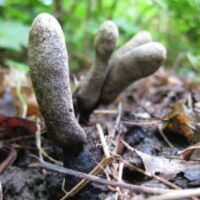
Figure 1. Dead man’s fingers is an apt moniker to describe the fruiting body of Xylaria species. Photo by Janna Beckerman.
Symptoms and Signs
Symptoms of infection by Xylaria may appear as stress and decline, including slowed growth, dieback, premature autumn coloration and leaf drop, and even crown or structural root cankers. Apple, crabapple or pear trees infected may produce an unusually large crop of undersized fruit.
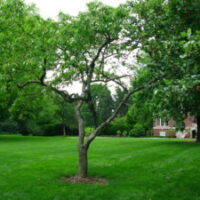
Figure 3a. Dead man’s fingers can be found associated with otherwise healthy, asymptomatic trees, or simply growing on dead wood—not necessarily causing disease.
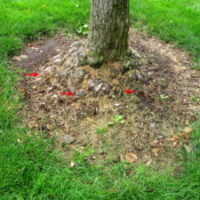
3b. Close-up of the rootstock with multiple croppings of Xylaria on the crown. Photo by Janna Beckerman.
Signs of Xylaria are more readily identified—namely, the dead man’s fingers (Fig. 4)! The club shaped, fingerlike fruiting bodies appear singularly or as clustered “fingers” about 1- 4 inches high, often at the base of infected or dying trees, or nearby large structural roots (Fig 4). In the spring, ascospores are produced by the “fingers”, creating a bluish bloom on the tips of the fingers. Cutting into a finger reveals a white interior with black bubbles that produce the sexual spores (ascospores). The “fingers” can release these spores for several months or years. In the spring, Xylaria can produce asexual spores (called conidia) anywhere on its surface, while also producing threadlike structures (called hyphae) that grow through dead or dying wood. Xylaria can survive as hyphae in roots for up to 10 years and can spread from plant to plant via hyphae when plant roots contact each other.
To view this full article and other Purdue Landscape Report articles, please visit Purdue Landscape Report
Subscribe and receive the newsletter: Purdue Landscape Report Newsletter.
Resources:
Tree Defect Identification, The Education Store
Tree wounds and healing, Got Nature? Blog
Tree Risk Management, The Education Store
Why Is My Tree Dying?, The Education Store
The Woody Plant Seed Manual, U.S. Forest Service
Native Trees of the Midwest, The Education Store
Invasive Species, Playlist, Purdue Extension – FNR YouTube Channel
Report Invasive Species, Purdue Invasive Species
Find an Arborist, International Society of Arboriculture
Subscribe Purdue Extension-Forestry and Natural Resources YouTube Channel
Janna Beckerman, Professor of Plant Pathology
Purdue Department of Botany

Recent Posts
- Report Spotted Lanternfly – Purdue Landscape Report
Posted: April 10, 2024 in Alert, Forestry, Invasive Insects, Plants, Wildlife, Woodlands - Declining Pines of the White Variety – Purdue Landscape Report
Posted: in Alert, Disease, Forestry, Plants, Wildlife, Woodlands - Are you seeing nests of our state endangered swan? – Wild Bulletin
Posted: April 9, 2024 in Alert, Forestry, How To, Wildlife - Cicadas in Spring! – Purdue Landscape Report
Posted: in Forestry, Plants, Safety, Wildlife - New Deer Impact Toolbox
Posted: April 7, 2024 in Forestry, Land Use, Plants, Publication, Safety, Wildlife, Woodlands - 2024-25 Fishing Guide now available – Wild Bulletin
Posted: April 4, 2024 in Alert, Aquaculture/Fish, Aquatic/Aquaculture Resources, How To, Ponds, Wildlife - Help Research Chronic Wasting Disease – Wild Bulletin
Posted: April 3, 2024 in Disease, Forestry, How To, Safety, Wildlife, Woodlands - Indiana Reptiles and Amphibians – IFWOA Webinar
Posted: April 1, 2024 in Forestry, How To, Webinar, Wildlife, Woodlands - Birding through the Seasons – IFWOA Webinar
Posted: in Forestry, How To, Webinar, Wildlife, Woodlands - Look Out for Invasive Carp in Your Bait Bucket – Wild Bulletin
Posted: March 31, 2024 in Alert, Aquaculture/Fish, Aquatic/Aquaculture Resources, Invasive Animal Species, Wildlife
Archives
Categories
- Alert
- Aquaculture/Fish
- Aquatic/Aquaculture Resources
- Ask the Expert
- Christmas Trees
- Community Development
- Disease
- Drought
- Forestry
- Forests and Street Trees
- Gardening
- Got Nature for Kids
- Great Lakes
- How To
- Invasive Animal Species
- Invasive Insects
- Invasive Plant Species
- Land Use
- Natural Resource Planning
- Nature of Teaching
- Plants
- Podcasts
- Ponds
- Publication
- Safety
- Timber Marketing
- Uncategorized
- Urban Forestry
- Webinar
- Wildlife
- Wood Products/Manufacturing
- Woodland Management Moment
- Woodlands
